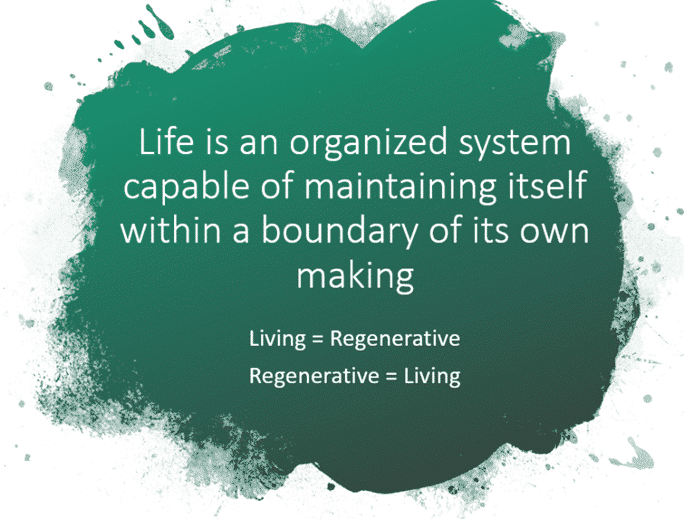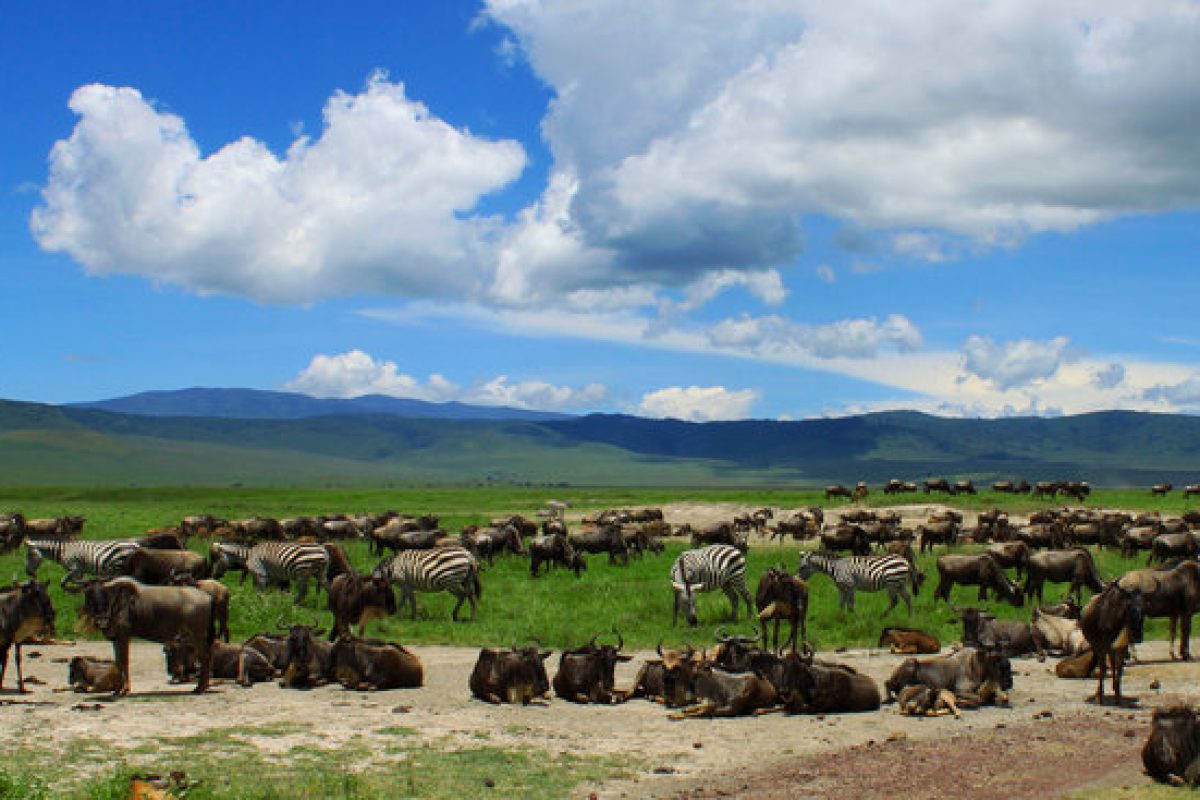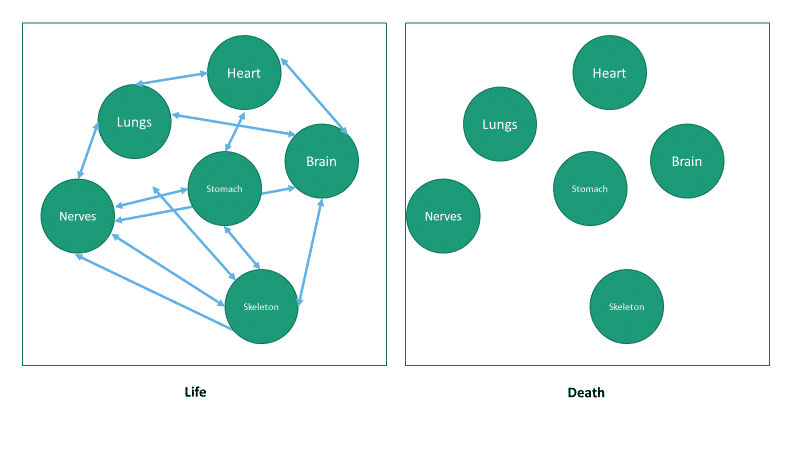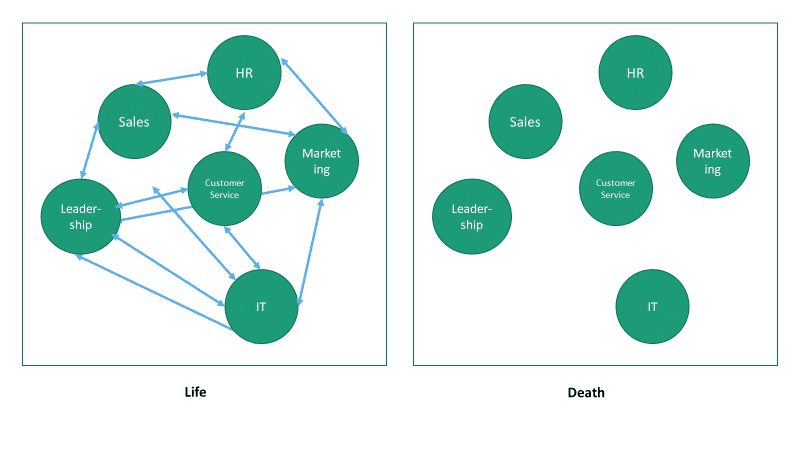This is the second in the Regenerative Unravelled Series. You can read part one here.
In a recap of my last blog post in this series, we learnt that we have been programmed to think of ourselves as machines. This has pervaded our lives since the Age of Enlightenment when man moved from a faith-based system of understanding to a science based system where the findings of Newton and others became so powerful. The approach was to pull systems apart into their component parts to understand them. All aspects of society including man, farming, businesses, science, communities and countries were compared to machines and this remains the dominant metaphor today.
However, our organisations and agriculture are based on living systems. When we try to manage living systems as machines to extract the maximum we can at all costs there are many unintended consequences. We have seen the far-reaching impact of these consequences on environment, climate, water, soil, health, farming business, communities and economies.
The reductionist approach of the mechanistic paradigm failed to effectively solve the “wicked” problems which threaten humanity and planet. This approach is to provide linear predictable solutions to problems. But we learnt that there are 3 types of problems and those relating to living systems are complex problems. A reductionist approach works well for the resolution of simple or complicated problems but can not solve complex problems.
In complex problems, life replaces the machine.
What is a Living System?
Many scientists over the years have searched for the answer to life and attempted to define criteria which characterises life. The closest so far is the work carried out by Humberto Maturana and Francisco Varela from the ‘Santiago School’ in Chile. They used a holistic or systems approach to determine what defines life by examining the question, how does a cell work?
Using an E coli bacterium they examined and mapped every chemical, material and energetic pathway within the cell in an attempt to be able to replicate the function of the living cell. They were unable to synthesise the function of the cell outside the cell, but did determine the defining characteristics of a living cell.
Everything required to maintain the pathways essential for the life are generated by the cell within the cell wall, which it also makes. It creates its own boundary.
The defining aspect of life is this ability to self-maintain and self-regenerate. Everything inside the cell is able to maintain and repair itself. This process has been called Autopoiesis (self-poetry, self-making).
From this work Maturana and Varela were able to classify the defining characteristics of life and living systems.
- Self-Regenerative ability is not located in any one place, it is nodal or decentralised
- Life is dependent on the interconnected relationships of all parts of the cell
- Life is a holistic (emergent) property of all “parts” of the cell and relationships between the parts
- Each “part” is also a self-regenerative (autopoetic) system so the cell as one whole is made up of a number of other wholes within it each able to regenerate themselves.

If we can define life, what is death? This seems obvious, death or lack of life is the loss of the ability to self-regenerate. More specifically death involves the break down of the interconnected relationships within the cell wall or boundary.
It is this interconnectedness that sustains life in living systems and creates the conditions for regeneration. For example, if we consider our bodies – we are made up of multiple parts or organs interconnected in multiple ways; blood, lymph, nerves etc. This interconnectedness is critical to life. We can sustain life of the individual parts but this is energy/input intensive. Is it alive? Can it regenerate?
We can apply this to other living systems we work with. Organisations depend on communication to perform and thrive. A break down of this communication creates silos and degeneration of health of the organisation.
And we can also apply this to farming. The production of healthy nutritious food requires living soils where life is abundant and diverse. Breaking the connections renders the Soil Food Web ineffective and this affects the health of us all.
Regeneration can only be created and recreated inside the structural boundary, be that of cells, organisations, communities or farms. This understanding of life and living provides the 6 principles which characterise a regenerative system.
- Holism. Interrelated and dependent.
- Mutualism. Inherent value and dependence in the other.
- Uniqueness. Original and the possibility of individual genius.
- Evolutionary. Maintains a dynamic balance with ever-changing environmental conditions.
- Nodal. Decentralized and distributed.
- Developmental. Growth and health of the members.
And a working characterisation of regenerative as;
“A living, evolving and naturally functioning environment where abundance and resilience are recurring outcomes of its underlying health.”
By applying these principles to the design of our systems, be that ourselves and families, farms, businesses, organisations, communities, and government, we create the conditions within those structures which deliver health to all parts/members. This is the paradigm shift from mechanistic where the focus is on maximum extraction from the system at all costs, to a regenerative system which provides health and resilience to all.
Fill out the form on our webinars page to get up to date information on future webinars and workshops. Leave your details here.
Here is the recorded version of the webinar – Regenerative as a Living System: Hosted by Dr Hugh Jellie (Ata Regenerative) and Tre’ Cates (nRhythm)
Ata Regenerative are at the forefront of regenerative agriculture practice in New Zealand. With 17 years working in the regenerative space and as the only EOV provider in the country, Ata Regenerative can assist with your transition to farm practice that focuses on the regeneration of soils, increased productivity and biological diversity, as well as economic and social well-being. To find out more, contact us here.








